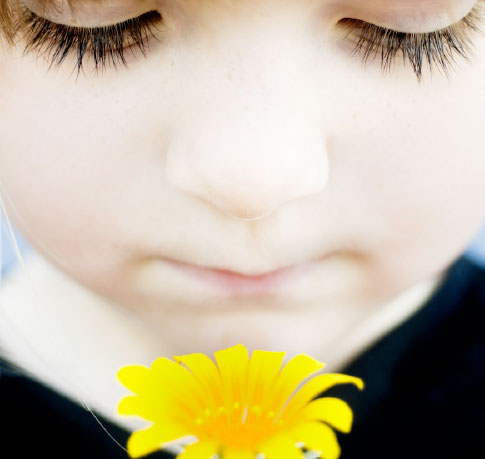 More than 9,000 UK homes are needed for children in care, yet many potential carers rule themselves out unnecessarily Barnardo’s has put out a plea for more foster carers to look after the record number of children in care across the UK. The number has reached its highest level in 30 years, with more than 70,000 children in care. Seventy-five percent of all children in care are fostered and, according to research from the Fostering Network, there is a current shortage of 9,070 foster families, with 7,600 new carers needed in England, 800 in Scotland, 500 in Wales and 170 in Northern Ireland. Barnardo’s is using Fostering and Adoption Week (11-17 January) to encourage people who might never have thought about it before to consider foster care. “We have large sectors of our communities who self-exclude from fostering because they believe they’re not able to foster,” said Brenda Farrell, head of fostering and adoption at Barnardo’s. Among those who regularly “self-exclude”, says Farrell, are those who are single, LGBT people, BME communities and those who do not own their own home. Farrell says all groups are welcome to apply and having a diversity of carers in the system is the key to its success. Foster care organisations try to place children with families who live in the same area and have a similar cultural background. Because of this, Barnardo’s issued an appeal last year to people from Asian backgrounds in Manchester to consider becoming carers, after it emerged that while the ethnicity of 14% of people there is Asian, in 2014 they accounted for just 4% of foster carers. What sorts of foster care are there? Those who would like to engage in foster caring can elect to offer short-term, long-term or “short break” (previously known as respite) care. Short break carers look after children for a weekend or a few weeks so that their long-term carers can have a break, and is particularly used for children with disabilities, special needs or behavioural difficulties. Short-term carers look after children for weeks or months while long-term plans are made for their care. Long-term carers take on children who need to live away from their birth family until they are adults. This does not provide the same legal protection of adoption, but in many cases functions in a similar way. Nikola and Tony Smith have two foster children – a 13-year-old daughter, who has been living with them for almost three years, and a nine-year-old son, who joined their family in October – both of whom are in long-term care with the couple. “I can’t have children of my own and Tony and I felt we had plenty to offer as parents and we wanted to offer assistance to children less fortunate,” said Nikola. “My husband says he’d never look back and neither would I. It’s the best thing I’ve ever done.” Who is suited to foster care? While there is no demographic group particularly suited to foster care, there are some traits that are desirable. For one, you need to have plenty of time. While it is not a requirement that foster carers are home full-time, they need to be flexible and available for their foster child, who will probably require more time and energy than any birth child. As well as this, Farrell recommends 100% commitment to the role and a sense of humour. “But the umbrella over it all is love – you’ve got to love children.” Paul Adams, fostering development consultant for CoramBAAF, says that first and foremost foster carers must have an interest in children. “It’s not for people who want an easy life, it does bring with it a whole range of challenges. We want people who can provide warmth, empathy and care for children, who can set boundaries and also people who have a good level of resilience and stickability.” Do your research People can foster through a local authority or an independent foster organisation and potential carers should do their research about which organisation suits them before signing up. “The first step is to decide who they want to approach,” said Adams. “People need to explore, to find a fostering service that’s relatively local to them, to find out what support that particular service will give, whether they like what they hear, and make a choice about who they’re fostering for.” What does the application process involve? The process takes approximately six months. There are training courses, a series of checks, including by the police and local authority, and references are taken from friends and family about suitability. The final stage of the process involves an in-home assessment. Kristina described the process as quite “invasive”, as a social worker is required to ask potential foster carers about every aspect of their life. “Honestly it can be quite difficult, but they need to know about your life for the safety of yourself and your children.” According to Adams, 90% of people who start the full assessment go on to foster, with 10% of people either coming to realise through the process that they are not suited to foster care or being informed by the social worker that they have not been approved. “In the big picture, this is a good thing. There is no benefit for them and the children for them to be approved if they’re not suited,” said Adams. Talk to everyone in your lives Nikola said that when she and Tony first considered fostering she thought it would just affect “me and Tony and the dog”, but soon realised there were many others who needed to be consulted, such as Tony’s children from a previous relationship. “It’s a big decision, a huge decision, we talked to our extended family about it, including Tony’s children. Even though they’re adults it could have an impact on them. They were so supportive and they’re very involved in [the foster children’s] lives. It can be very intense with their behaviours, so you need a support network,” said Nikola. Kristina started considering fostering in 2009, when her birth daughter was a teenager. Her daughter was able to come along to the Barnardo’s training course, which Kristina said was invaluable. Having other children living in the house can be a benefit when it comes to fostering. “It’s neither a positive or a negative thing in itself, birth children in a foster home can be a huge positive for some children. But we would need to know that birth children have an understanding of what’s being proposed and are broadly positive about it. Having another child affects everyone and it wouldn’t be appropriate if the birth children were opposed to it,” said Adams. You’ll get support “It’s important to say that foster carers do get a huge amount of support so they don’t need to approach the process as the finished product. They get support and training, what we need for foster carers is to be part of a team that meets the needs of the children,” said Adams. For years, Kristina provided care for trafficked young people and unaccompanied minors seeking asylum. Her first foster child was trafficked to the UK and started living with Kristina at the age of 16. When she arrived in Kristina’s home, the girl spoke very little English and at first they relied on Google Translate to communicate. “It was a rabbit in the headlights situation, it’s a big undertaking. I had to learn very, very fast. But I have to say, having an agency like Barnardo’s helps the process so much,” she said. When her foster daughter married recently, Kristina performed the role of mother of the bride. “It was just amazing. I’ve had a lovely family, lovely life and amazing foster child. What more can you ask for?” Source: http://www.theguardian.com/uk-news/2016/jan/15/how-do-i-become-a-foster-carer Comments are closed.
|
News & JobsNews stories and job vacancies from our member agencies, the fostering sector and the world of child protection and safeguarding as a whole. Browse Categories
All
|
|
The Fairer Fostering Partnership
c/o TACT Fostering Innovation House PO Box 137 Blyth NE24 9FJ |

 RSS Feed
RSS Feed
